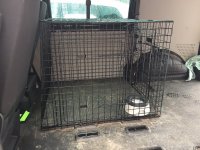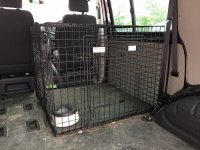Hi.
I am new to the forum and loving all the advice. I have a new t6 SWB edition 6 velle and for my holiday trips i plan to remove the two middle seats and push the bench seat forward.
I am after then installing some sort of luggage gaurd and load up all the luggage so nothing comes into the cabin and then either use a luggage net or another guard to secure the luggage and then throw the dogs in the back. That way we can easily get the dogs out for stops etc.
Does anyone have any advice as to what to buy or get made and the best way to fix them?
Cheers....
I am new to the forum and loving all the advice. I have a new t6 SWB edition 6 velle and for my holiday trips i plan to remove the two middle seats and push the bench seat forward.
I am after then installing some sort of luggage gaurd and load up all the luggage so nothing comes into the cabin and then either use a luggage net or another guard to secure the luggage and then throw the dogs in the back. That way we can easily get the dogs out for stops etc.
Does anyone have any advice as to what to buy or get made and the best way to fix them?
Cheers....



